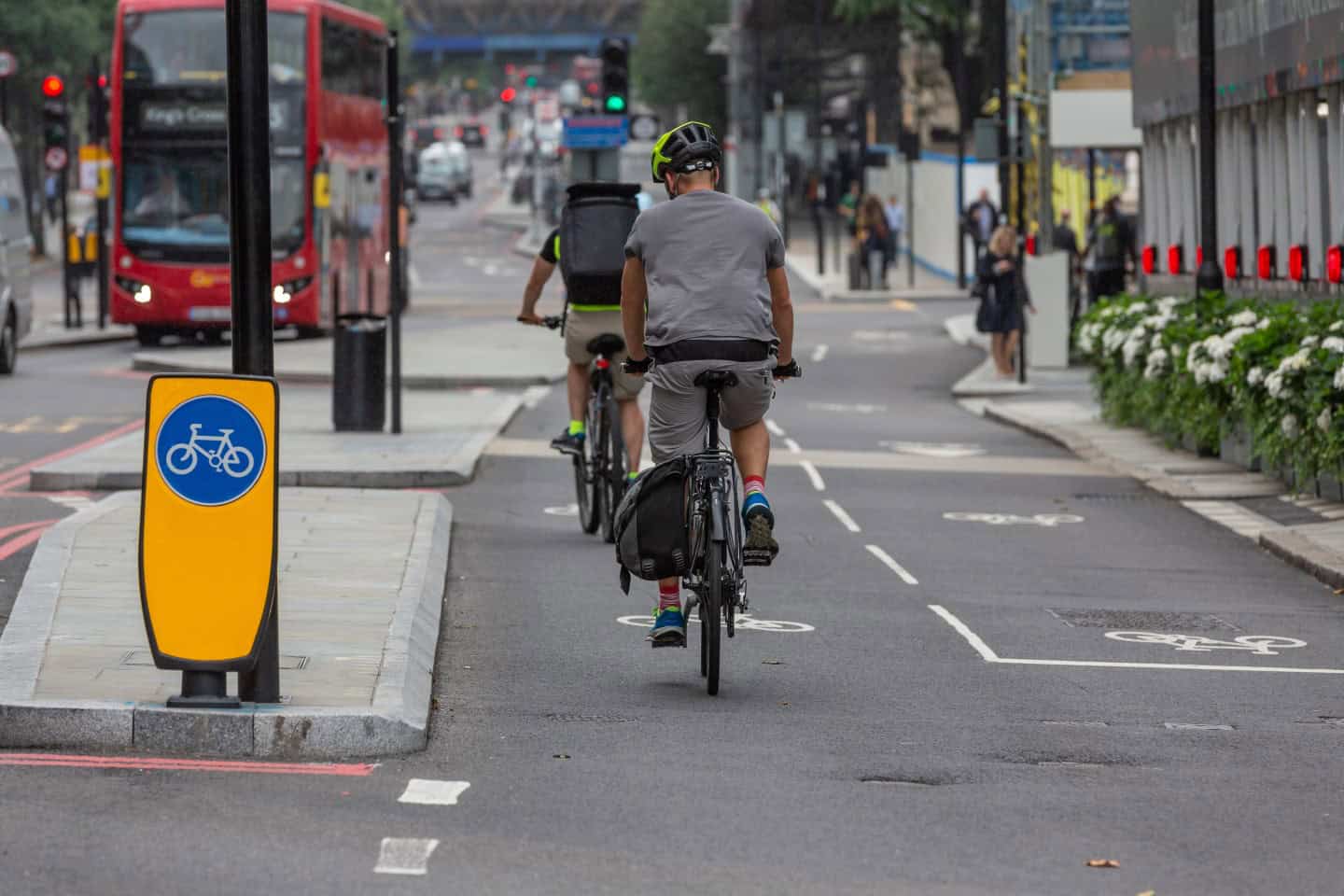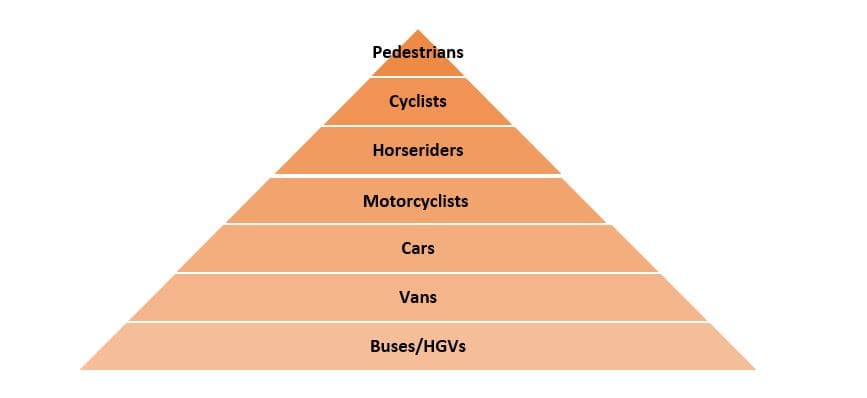
How do the recent changes to the Highway Code affect cyclists?
The Highway Code was updated in January 2022, with eight new rules being introduced as well as 49 updates to existing rules. The aim of The Highway Code is to promote safety on the road, whilst also supporting a healthy, sustainable and efficient transport system.
Hierarchy of Road Users
The most obvious change to The Highway Code is the introduction of the Hierarchy of Road Users. The Hierarchy of Road Users is a concept that places those road users most at risk in the event of a collision at the top of the hierarchy. Cyclists are placed second on the hierarchy just below pedestrians. The aim is to place the greatest responsibility to reduce danger, on those who have the potential to cause the greatest harm.

It is not surprising that cyclists are considered one of the most vulnerable road users. Figures from the Department of Transport showed that in 2020, 141 pedal cyclists were killed in Great Britain, whilst 4,215 were reported to be seriously injured. Cyclists are not protected by a vehicle body in the same way car users are. Furthermore, cyclists tend to be harder for drivers to see on the road. In our experience, the most common contributory factor in fatal or serious accidents between cyclists and another vehicle is that the driver of the vehicle failed to look properly. This makes cyclists particularly susceptible to injuries.
It is important that cyclists appreciate that they too have a responsibility to reduce danger to pedestrians, as pedestrians are considered the most vulnerable road user according to the hierarchy. In particular, The Highway Code has provided guidance in relation to routes and spaces that are shared by both pedestrians and cyclists. Cyclists should not pass pedestrians closely or at high speed. Therefore, it is important that cyclists slow down, give pedestrians enough space, and make it known their presence known by sounding their bell. Thy should also bear in mind that pedestrians may be deaf, blind, or partially sighted and therefore should not presume that their presence has been noted.
Cyclist positioning in the road
The advice given to cyclists for many years has been to ride in the centre of a lane in order to improve visibility and to stop other road users from overtaking cyclists in dangerous situations. The updated Highway Code has introduced new guidance to formalise this advice.
Cyclists should ride in the centre of their lane on quiet roads, in slower-moving traffic and at the approach to junctions or where the road narrows. Furthermore, cyclists should keep at least 0.5 metres away from the kerb edge when riding on busy roads where there are other vehicles moving faster than them.
The Highway Code has also stated that cyclists can ride two abreast as it can be safer to do so, particularly in larger groups or when accompanying children or less experienced riders. However, cyclists must still remain considerate of the needs of other road users. They should be aware of people driving behind them and should allow them to overtake. This may require a cyclist to stop or return to riding in single file, but this should only be done if it can be achieved in a safe manner.
The updated Highway code also explains that people cycling should take care when passing parked vehicles; leaving enough room to avoid being hit if a car door is opened. The recommended distance is 1 metre which is roughly a door’s width. This is to avoid ‘dooring’ incidents where a cyclist is struck by someone opening their vehicle door, usually resulting in the cyclist being knocked off their bike which can often have devastating consequences.
Cyclists and overtaking
The updated Highway Code now includes guidance on safe passing distances and speeds for people driving or riding a motorcycle when overtaking vulnerable road users. You should now leave a gap of at least 1.5 metres when overtaking people cycling at speeds of up to 30mph and should give cyclists more space when overtaking at higher speeds.
If it is not possible to overtake using the above recommended passing distances, then the driver should wait behind the cyclist and not overtake until it is safe. This new guidance should help to reduce the number of accidents caused by overtaking at unsafe distances. However, should a cyclist suffer an accident due to close passing, the updated guidance should make it easier to prove that the driver was not driving safely and is responsible for the accident.
Passing slow moving or stationary traffic
The updated Highway Code confirms that people cycling may pass slower-moving or stationary traffic on either the right or the left-hand side. However, as a cyclist you should proceed with caution as people driving may not be able to see you. This is particularly important on the approach to junctions and when deciding whether it is safe to pass lorries or other large vehicles.
Making roads safer for cyclists and other vulnerable road users is a good thing!
The new rules have clearly been implemented to urge drivers to take more care when around those who are considered more vulnerable i.e. those at the top of the hierarchy. Hopefully as more road users become aware of the new changes to the rules, the roads will become safer for those most at risk and we should start to see a decrease in the number of cyclists, and other road users, being injured on the roads.










